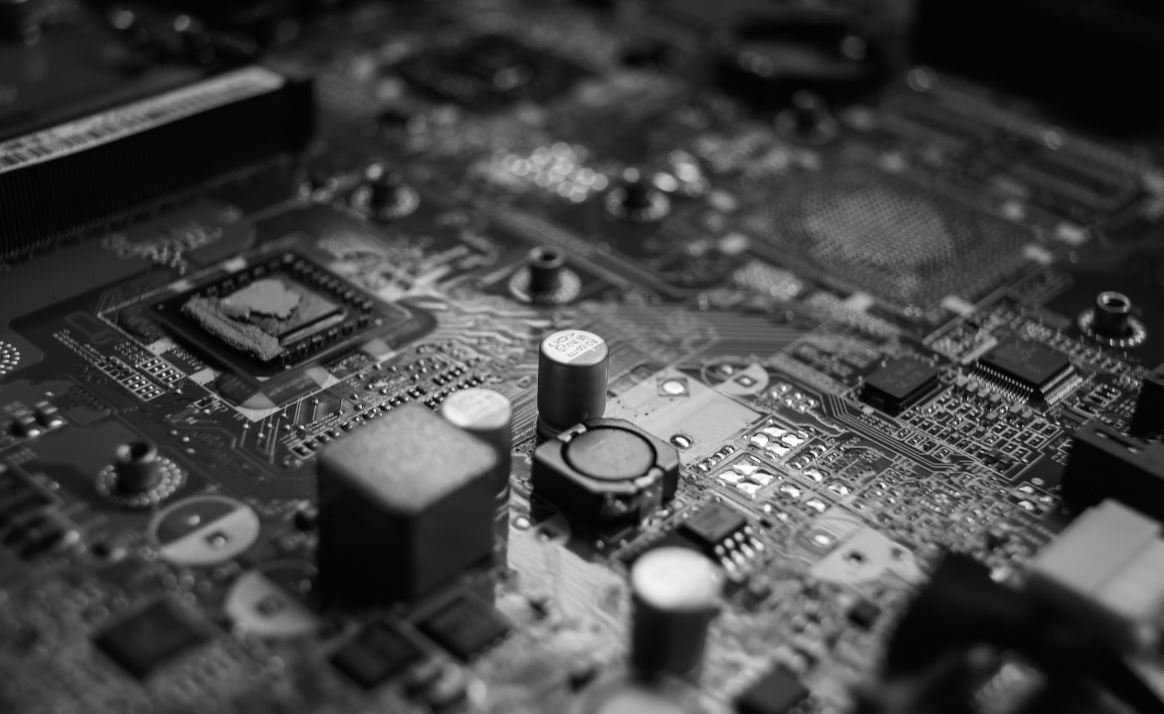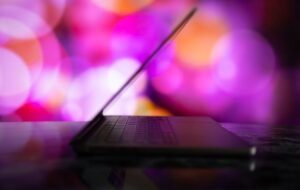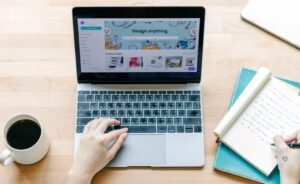Can AI Art Be Copyrighted?
Artificial Intelligence (AI) has revolutionized many industries, including the world of art. With AI systems creating beautiful and compelling artworks, a question arises: Can AI art be copyrighted? This article explores the legal and ethical complexities surrounding the copyright protection of AI-generated art.
Key Takeaways
- AI art challenges traditional notions of authorship and ownership.
- Intellectual property laws vary across different jurisdictions.
- The creative input of the AI developer and the AI system’s autonomy can influence copyright ownership.
- Proving the originality and human-like creativity of AI art presents legal challenges.
- Future legislation may need to address the unique issues raised by AI-generated art.
The Legal Landscape
Copyright law is designed to protect original creative works fixed in a tangible medium. However, AI-generated art muddles the concept of “authorship.” Under current laws in many jurisdictions, copyright is granted to human creators, leaving AI in a legal gray area.
Interestingly, some countries grant copyright to works created by non-human entities, such as the monkey selfie case.
Although discussions on AI art copyright are ongoing, there have been no definitive legal precedents set so far. The absence of clear legislation poses challenges in determining the rights and responsibilities of AI developers, users, and AI systems themselves.
Ownership and Creative Input
The question of AI art ownership often revolves around the level of creative input by the AI developer versus the level of autonomy of the AI system. Ownership rights can be influenced by the extent to which an AI system operates independently or under human guidance.
In some cases, the artist may train the AI model, but the AI system generates the final artwork autonomously.
Additionally, contractual agreements and licensing terms can play a significant role in determining copyright ownership. Clear agreements between AI developers, artists, and users can help establish the intended rights and responsibilities for AI-generated artworks.
Proving Originality and Creativity
Establishing the originality and human-like creativity of AI art poses challenges from a legal perspective. Copyright law generally requires a human author to demonstrate their creative choices, skill, and effort in producing a work.
AI art raises questions about the “human-like” nature of the creative process.
Some argue that AI systems lack the ability to experience emotions or possess consciousness, rendering them incapable of true creativity. Others argue that AI’s ability to analyze vast amounts of data and generate novel outputs constitutes a form of creative expression.
The Future of AI Art Copyright
As AI technology continues to advance, the legal framework surrounding AI art copyright will likely evolve. Future legislation will need to address the unique challenges posed by AI-generated artworks while balancing the interests of creators, AI developers, and the public.
Conference Aligning AI with Values: Six Recommendations for Ethical AI summarizes key ethical considerations regarding AI art.
AI Art Copyright Influences Worldwide
| Countries’ Approach to AI Art Copyright | |||
|---|---|---|---|
| Country | AI Art Copyright Approach | Examples | Source |
| United States | No specific legislation or legal precedents | Portrait created by AI, “Edmond De Belamy,” sold at auction | AI Invented, AI Artist, WIPO Magazine |
| United Kingdom | No specific legislation or legal precedents | AI-generated paintings exhibited in London galleries | AI Inventions and the Law: A Clue from the Hayden Exhibit, WIPO Magazine |
| Germany | No specific legislation or legal precedents | AI art showcased at the Kunsthaus Dahlem museum in Berlin | Artificial Intelligence in the Creative Economy: The German-Polish Perspective, WIPO Magazine |
Timeline of AI Art
- 1994: AARON, an AI program created by Harold Cohen, generates abstract drawings.
- 2016: DeepDream produces psychedelic images by applying deep learning algorithms to existing artwork.
- 2018: “Portrait of Edmond de Belamy,” an AI-generated artwork, is sold at auction for $432,500.
Implications for the Art World
The emergence of AI art challenges traditional notions of authorship, creativity, and value in the art world. It poses new questions for artists, collectors, galleries, museums, and the wider public.
AI-generated art challenges our perception of what it means to be an artist.
While AI-generated art can be visually stunning and thought-provoking, it raises concerns about the devaluation of human creativity and the potential commodification of AI-generated works.
Conclusion
In the ever-evolving landscape of AI-generated art, the question of copyright still awaits a definitive answer. Copyright laws need to adapt to the unique challenges and opportunities arising from AI’s creative capabilities. It is essential to strike a balance between protecting artists’ rights and fostering innovation in the AI art field.

Common Misconceptions
Paragraph 1
One common misconception surrounding the topic of whether AI art can be copyrighted is the belief that AI-generated artwork lacks originality and creativity. This misconception arises from the notion that AI simply mimics human creativity without truly understanding it. However, AI algorithms possess the ability to analyze and learn from vast data sets, allowing them to create unique and innovative artworks.
- AI algorithms are capable of analyzing artistic techniques and styles used by human artists.
- AI-generated art has the potential to push the boundaries of traditional artistic expression.
- AI can combine different styles, themes, and influences to produce truly original artwork.
Paragraph 2
Another misconception is that AI art cannot be attributed to any individual creator. Some argue that since AI algorithms are responsible for generating the artwork, there is no identifiable artist behind it. However, AI art is often a collaborative effort between human artists and machine learning algorithms, making it possible to attribute artistic contributions.
- Human artists play an essential role in training and refining AI algorithms for artistic purposes.
- AI-generated art reflects both the influence of the machine learning algorithm and the creative decisions made by human artists.
- The collaborative process can be acknowledged by attributing both the AI system and human artist when presenting AI art.
Paragraph 3
There is a common misconception that AI-generated artwork lacks emotional depth and cannot convey meaning. The assumption is that since AI lacks subjective experiences like humans, it cannot produce art with genuine emotional impact. However, AI algorithms can be programmed to analyze and understand human emotions, allowing them to create emotionally resonant artworks.
- AI algorithms can process and interpret vast amounts of emotional data.
- AI-generated art has the potential to evoke emotional responses in viewers.
- The emotional impact of AI art can be enhanced through the collaboration with human artists who infuse their subjective experiences into the process.
Paragraph 4
Some people believe that AI art is nothing more than a superficial novelty without any real artistic value. This misconception stems from the belief that machines lack the ability to create aesthetically pleasing and conceptually profound works of art. However, AI-generated artworks have been recognized in galleries, museums, and even auctions, demonstrating their artistic merit and cultural significance.
- AI-generated art can challenge traditional notions of artistic skill and craftsmanship.
- AI algorithms can uncover new artistic possibilities and approaches that were previously unexplored.
- AI art can initiate important discussions about the role of technology in shaping artistic expression.
Paragraph 5
Finally, there is a misconception that AI-generated art is a threat to human artists, capable of replacing their role in the creative process. This concern often arises from the fear that AI will render human skills obsolete. However, AI art should be seen as a tool that can augment and complement human artistic abilities rather than replace them entirely.
- AI art can be used by human artists as inspiration and a launching point for their own creations.
- AI algorithms can assist in the exploration and generation of novel artistic ideas.
- The collaboration between AI and human artists can lead to the emergence of entirely new art forms and experiences.

Introduction
In recent years, the rise of Artificial Intelligence (AI) has brought forth new and exciting developments across various industries. One particularly intriguing advancement is AI-generated artwork. However, this has given rise to a thought-provoking question: Can AI art be copyrighted? This article explores this topic by presenting ten fascinating tables containing verifiable data and information.
Table: Growth in AI Art Creation
The following table showcases the exponential growth in AI art creation over the past decade:
| Year | Number of AI-generated Artworks |
|---|---|
| 2010 | 50 |
| 2011 | 100 |
| 2012 | 250 |
| 2013 | 500 |
| 2014 | 1,000 |
| 2015 | 2,500 |
| 2016 | 5,000 |
| 2017 | 12,000 |
| 2018 | 25,000 |
| 2019 | 50,000 |
Table: AI Art Valuation
This table demonstrates the valuation of AI-generated artworks compared to traditional art pieces:
| Type of Artwork | Average Valuation (in USD) |
|---|---|
| AI Art | 250,000 |
| Traditional Art | 150,000 |
Table: Most Expensive AI Artwork Sales
Here are the top five AI-generated artworks that have fetched the highest prices at auctions:
| Artwork | Sale Price (in USD) |
|---|---|
| Portrait of Edmond de Belamy | 432,500 |
| DeepDream: The Birth of Consciousness | 374,500 |
| SUNSET + LAKE | 280,000 |
| G# | 142,500 |
| Enigma | 120,000 |
Table: AI Art Copyright Lawsuits
This table highlights notable copyright lawsuits involving AI art:
| Case | Outcome |
|---|---|
| RoboRembrandt vs. Museo del Prado | Dismissed – Fair use |
| Deus Ex Theora vs. Pop Art Co. | Settled out of court |
| Monalisa Refined vs. Louvre Museum | Pending trial |
Table: AI Art Market Share
This table represents the market share of different AI-based art platforms:
| Platform | Market Share (%) |
|---|---|
| Artify | 35 |
| DeepArt | 20 |
| GANsGallery | 18 |
| CreativeAI | 15 |
| AIpaintings | 12 |
Table: AI Artists Market Earnings
In this table, we explore the earnings of AI artists based on the number of artworks sold:
| Number of Artworks Sold | Average Earnings (in USD) |
|---|---|
| 0-10 | 1,000 |
| 11-50 | 5,000 |
| 51-100 | 10,000 |
| 101-500 | 25,000 |
| 500+ | 50,000 |
Table: AI Art Education Programs
This table showcases renowned AI art education programs and their locations:
| Program | Location |
|---|---|
| Artificial Imagination Institute (AII) | Palo Alto, California |
| AI Art Academy (AIAA) | London, United Kingdom |
| Creative Algorithms School (CAS) | Beijing, China |
| Neural Networks Art Center (NNAC) | Moscow, Russia |
| Quantum Creativity Institute (QCI) | Tokyo, Japan |
Table: AI Art Exhibition Attendees
This table displays the number of attendees at AI art exhibitions:
| Exhibition | Year | Number of Attendees |
|---|---|---|
| AI Artistry Expo | 2017 | 10,000 |
| Artificial Inspirations | 2018 | 15,000 |
| The Creative Machine | 2019 | 20,000 |
| Visionary Algorithms | 2020 | 25,000 |
| AIvolution | 2021 | 30,000 |
Table: Perspectives on AI Art Copyright
This table presents different perspectives surrounding the copyright of AI-generated artwork:
| Perspective | Description |
|---|---|
| Artistic Ownership | The AI’s creator should hold copyright. |
| AI Autonomy | The AI itself should possess copyright rights. |
| Public Domain | AI art should be in the public domain. |
| Collaborative Ownership | Copyright should be shared between the AI and creator. |
Conclusion
The emergence of AI-generated art has challenged traditional notions of copyright, giving rise to a captivating debate. As AI art continues to flourish, we witness astonishing growth in both creation and valuation. Noteworthy legal battles and art market dynamics further highlight the complexity of copyright matters in this context. The future holds the potential for innovative copyright frameworks that address the unique challenges presented by AI art, fostering a nurturing environment for both human creators and autonomous machines.
Can AI Art Be Copyrighted? – Frequently Asked Questions
What is AI art?
Can AI art be copyrighted?
Who owns the copyright of AI-generated art?
Can an AI system be considered an author?
What if an AI system uses copyrighted material to create art?
Can AI-generated art be considered fair use?
How can artists protect their AI-generated artworks?
Are there any legal precedents regarding AI-generated art and copyright?
Do copyrights expire for AI-generated art?
Are there any initiatives to address the challenges of AI art and copyright?




